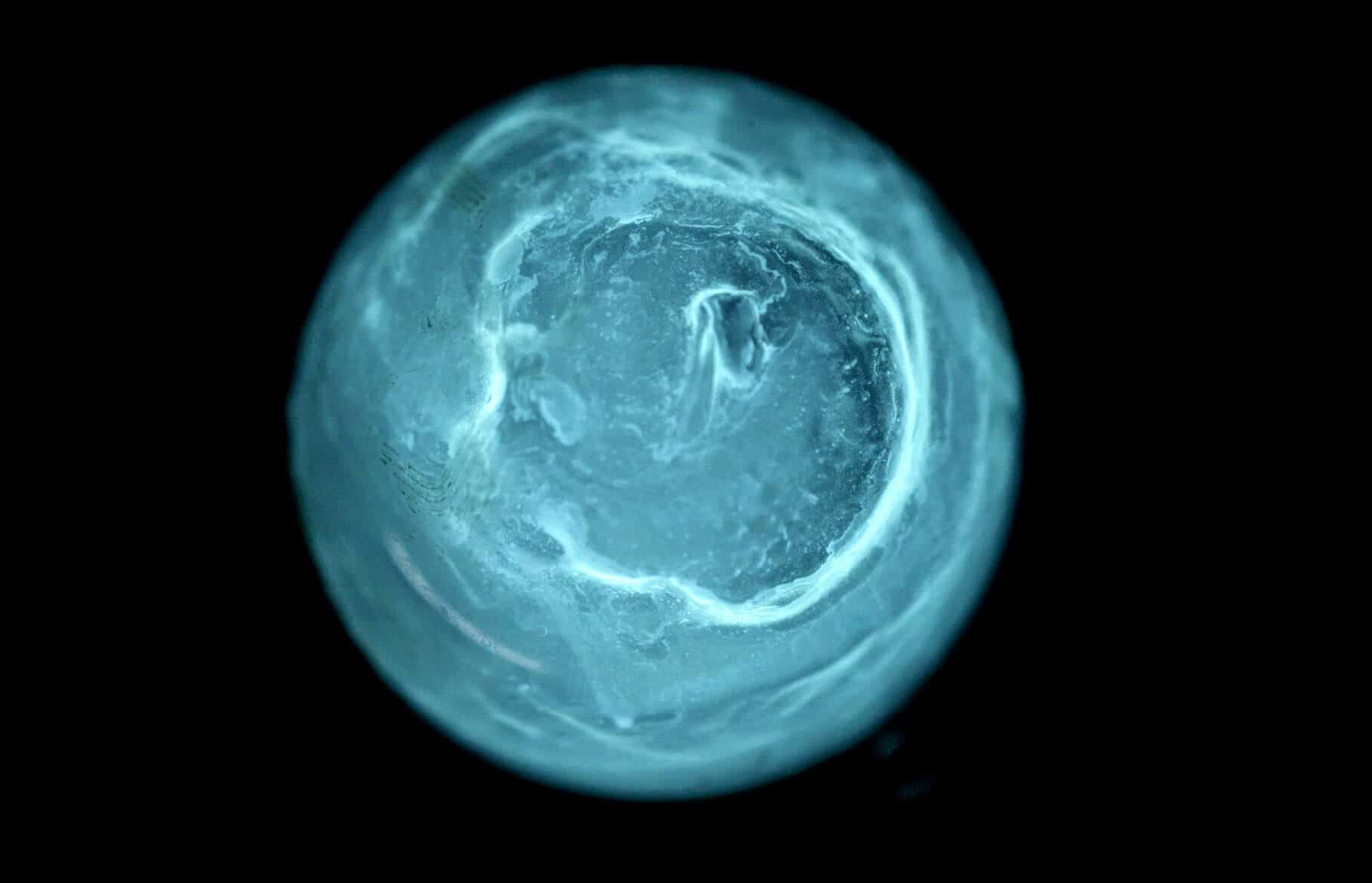The artist-researchers Jeremie Brugidou and Lia Giraud are proposing two film conversations that expand upon their articles for PALM, featuring images of different experimentations with the living world that they have conducted during respective artist residencies. Each film is constructed via correspondence, bringing to light spheres of practice and reflection common to both researchers: the observation and handling of the living world; collaborative and interdisciplinary contexts of creation; the search for forms and narratives that renew our approach to the living world. The choice of a film devoid of human voice and text, albeit far from silent, is a way of restoring the original language of images of the living world – that of a perceptual vibratory world, shaped by the waves, pulsations and rhythms of the inhabited environment.
Jeremie Brugidou’s bioluminescent spheres, installed in the Musée Subaquatique de Marseille, are launching the first conversation. During a residency at the Institute for Advanced Study of Aix-Marseille University (IMERA) and in partnership with the Mediterranean Institute of Oceanography (MIO), Brugidou designed a multi-species underwater installation. The blue planets suspended in the sea depths offer a space of shared curiosity in which humans become simple wandering beings. As they temporarily stray, the spheres delicately sway to the rhythm of variation. This mysterious “light of the sea” echoes the experimentations undertaken at Lizières Cultural Center (Épaux-Bézu) by Lia Giraud and composer Mathias Durand with Pyrocystis noctiluca marine plankton, known for its bioluminescence naturally activated by the movement of waves, replaced by sound waves in their experiment. Bioluminescence, with its distinctive blue color, is fascinating, widely used by ocean fauna but rarely observed in our terrestrial environments. The blue honey project, for which Giraud partnered with filmmaker Gabriel Laurent and beekeeper Arnaud Richardier, draws inspiration from true events that occurred in the French town of Ribeauvillé in 2012. Beekeepers observed the production of a nectar with unexpected colors, evidencing human activities. This incident, quickly corrected and forgotten by the food industry, was purposefully extended by this artistic performance. It sketches out new forms of collaboration between humans and non-humans, to upend exploitative relationships and our normative visions of the living world. The human sculptural representations that populate the Musée Subaquatique de Marseille have over time become ecosystems colonized by an array of living beings. The wanderings of the frog-humans, filmed by Brugidou, corroborates the evocation of a changing humanity. The final sequence proposed by Giraud is the fruit of a residency at Max Mousseron Institute of Biomolecules (University of Montpellier) with the aforementioned pair. Used in lab studies for the production its large spherical eggs, the xenopus female can be considered the maternal icon of chimerical future species: its oocytes are used for the expression of genetic material of multiple animal and human species. From one blue to the next, from one sphere to the next, a vision mode is activated via mutual intractions, step by step, toward the continuity of distance – an aura of vision.


